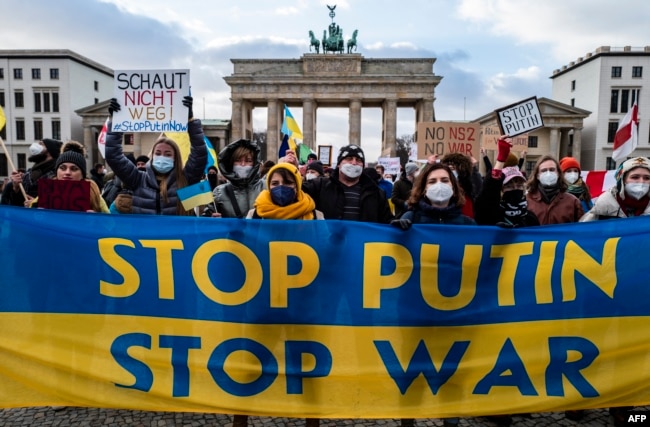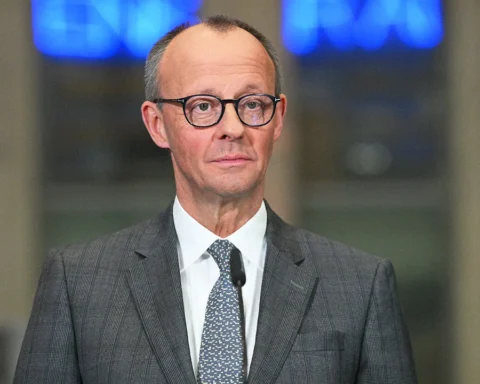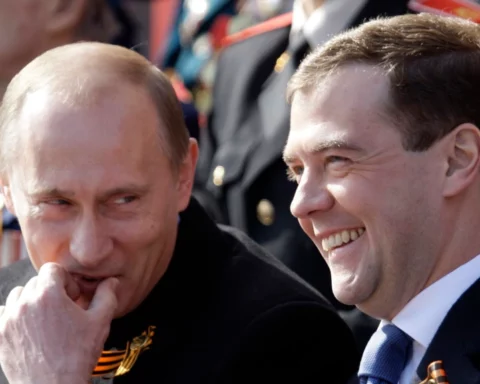Vladimir Putin has done much to rehabilitate Russia’s Soviet past, a rehabilitation that has grown apace with memorials once again erected to Joseph Stalin, and officials no longer embarrassed to hang portraits of the late Soviet dictator in their offices.
And the Russian president appears also to be copying the coercive diplomacy — with its mix of threats, hard power and brinkmanship — adopted by his Soviet predecessors, according to historians and former diplomats.
The Kremlin and its ally China called on the United States and NATO Friday to turn back on “Cold War approaches,” but the Russian military buildup on the borders of Ukraine harks back in many ways to the tactics pursued by Stalin and his successor, Nikita Khrushchev.
“We may be seeing Putin’s version of former Soviet leader Nikita Khrushchev’s bluster and threats in 1961 over then-divided Berlin — an attempt to intimidate a U.S. president into offering concessions at a moment of perceived U.S. weakness today as a result of the American defeat and withdrawal from Afghanistan and domestic political division,” notes Daniel Fried, a former assistant secretary of state for European and Eurasian affairs.
He added in a commentary for Just Security, an online national security forum, “Thirty years after the collapse of the Soviet Union, Putin demands that the West help restore its empire in Europe, the imposition of which by Joseph Stalin was the original cause of the Cold War. Russian Foreign Minister Sergey Lavrov revealed a lot about Kremlin views of the countries between Germany and Russia when he said in December that the collapse of the USSR and the Warsaw Pact left them not free or sovereign but ‘ownerless.’”
Testing the resolve and resilience of opponents with displays of brinkmanship goes back further and was honed by Stalin, starting almost immediately after the defeat of Adolf Hitler’s Reich. In a new book, “Checkmate in Berlin,” British historian Giles Milton chronicles how Stalin tested and bewildered his wartime Western allies by harassing them at every turn in the German capital, which was divided into Soviet, American, British and French zones of occupation.
His goal was to wear them down and evict them not only from Berlin but the whole of Germany. The machinations included military standoffs that saw Red Army troops trespassing into the West’s zones of occupations, stacking the police and district administrations in Berlin with Moscow loyalists and building up the Communist Party, all done with astonishing, clandestine nimbleness to keep the Americans, the British and French wrong-footed.

The Soviets used propaganda and misinformation adeptly, making it impossible to determine what news was true and what was false, and with the overall goal of trying to turn Berliners against the West, says Milton.
“One of the most powerful propaganda tools was Radio Berlin, whose studios had been captured intact in May 1945. None of the broadcasters was subjected to denazification. According to one American intelligence agent, the station continued ‘with the same personnel that had been there under the Nazis. They just changed the colors of the shirts,’” Milton writes.
The crisis slowly came to a head. Washington and London eventually hardened their resistance to Soviet demands and maneuvers, partly persuaded to do so by American diplomat George Kennan, who sent a telegram of more than 5,000 words from Moscow to Washington, the longest the State Department had ever received. In the so-called Long Telegram, Kennan outlined Stalin’s expansionist and antagonistic intentions, and recommended strategic patience and containment of the Soviet Union.
In June 1948, Soviet forces blockaded rail, road and water access to Allied-controlled areas of Berlin, starving them of electricity as well as essential food and coal. The United States and the United Kingdom responded with a herculean and ingenious campaign, known as Operation Vittles, (Berlin airlift) and airlifted enough food and fuel to feed and provide heat for 2.5 million West Berliners from air bases in western Germany.
The crisis ended in May 1949 with the blockade lifted when Stalin eventually conceded he couldn’t starve and freeze West Berliners into submission. The United States and Britain also mounted a counter-blockade on eastern Germany, causing severe shortages in turn, which the Kremlin feared might trigger political upheaval in their sphere of influence. The Berlin airlift acted as a spur for Western powers to set up NATO, Milton says.
John Lewis Gaddis, an eminent historian of the Cold War, also sees parallels between the coercive diplomacy employed by the Kremlin with its mixture of hard power and diplomatic know-how. In a recent radio interview with the Canadian Broadcasting Corporation, Gaddis said Kennan’s analysis of the conduct of Soviet leadership is relevant today.
Kennan wrote that the Soviet Kremlin didn’t believe in “peaceful coexistence” with the West, a belief springing from a “traditional and instinctive Russian sense of insecurity” and a conviction that the West was menacing but wracked by growing internal political convulsions and destined finally to succumb.
“That is exactly Putin today,” said Gaddis.






